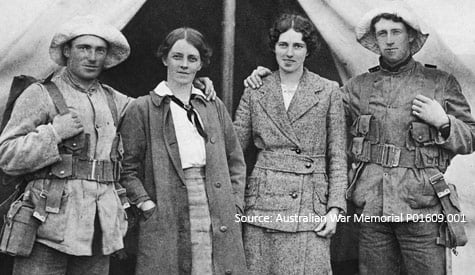Museums tap into the personal story to build a true picture of the impact of war
Research news
Melbourne Museum’s Love and Sorrow exhibition which explores the impact of war on Australian families is a leading example of how museums are increasingly moving toward personal accounts to represent difficult times in history.
Professor Witcomb recently spoke on the ways museums are using emotion to connect audiences to representations of war at a symposium that looked at the relationship between war and histories of emotion at Museum Victoria.
The symposium was sponsored by the ARC Centre of Excellence for the History of Emotions and Museum Victoria.
“The Love and Sorrow exhibition doesn’t focus so much on the chronology of war,” she explained.
“Instead it follows eight biographies which trace the impact of the war through the generations.
“In doing so, the exhibition develops a social history of the war and brings home the relationship between the past and the present, avoiding the romanticism and heroisation we sometimes see in exhibitions that commemorate war.
”Instead, audiences are given the opportunity to understand and feel the experiences of families whose sons and daughters went to war.”
Professor Witcomb, whose expertise focusses on the use of museums to build cross-cultural understandings and interpret difficult histories, said this approach was an emerging trend among museums.
“Traditionally we have seen museums play a conservative role in the way societies narrate the past.
“They have not been known for making this past complex, uncomfortable or to make direct connections between the way things are now and the way things were back then.
“Instead, their role has for the most part been to celebrate national identities.
“This is especially so when it comes to narratives about war.”
Professor Witcomb said the Love and Sorrow exhibition is an example of how this approach was changing.
“Rather than focusing on how Australian experiences during WWI made the nation, which is the standard interpretation, it chooses to look at the impact of the war on families and how this impact is still felt today,” she said.
“Museums increasingly use personal histories to question the place of the past in how we understand the present, particularly around events with difficult histories such as war, colonisation and migration.
“The personal biography captures the emotional lives of the people involved and by doing so builds the possibility of empathetic relationships between the subjects of history with visitors.
“So in this instance, as you go through the exhibition, you get a real understanding of the impact of war on families and society.”
Share this story

